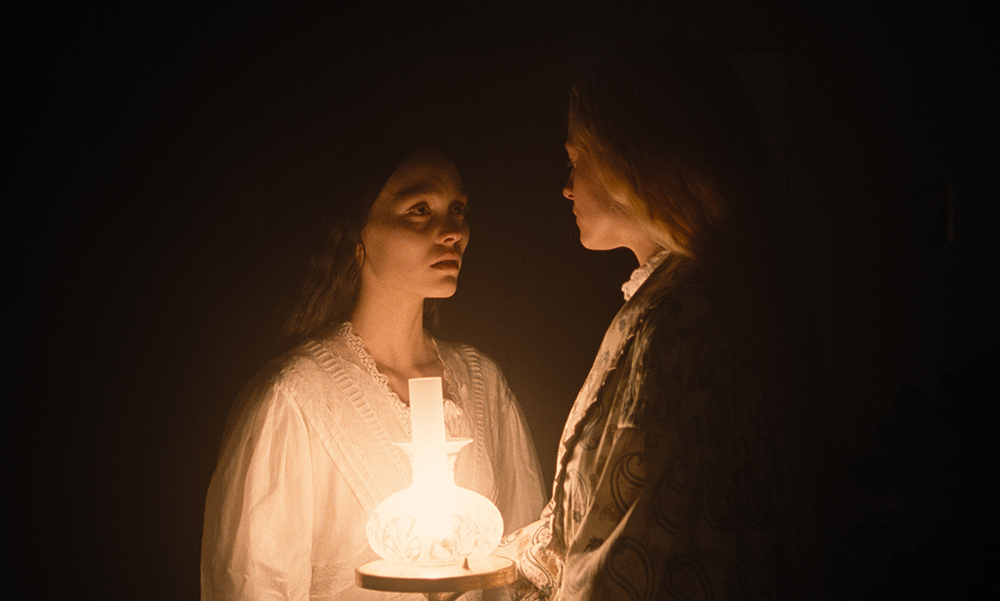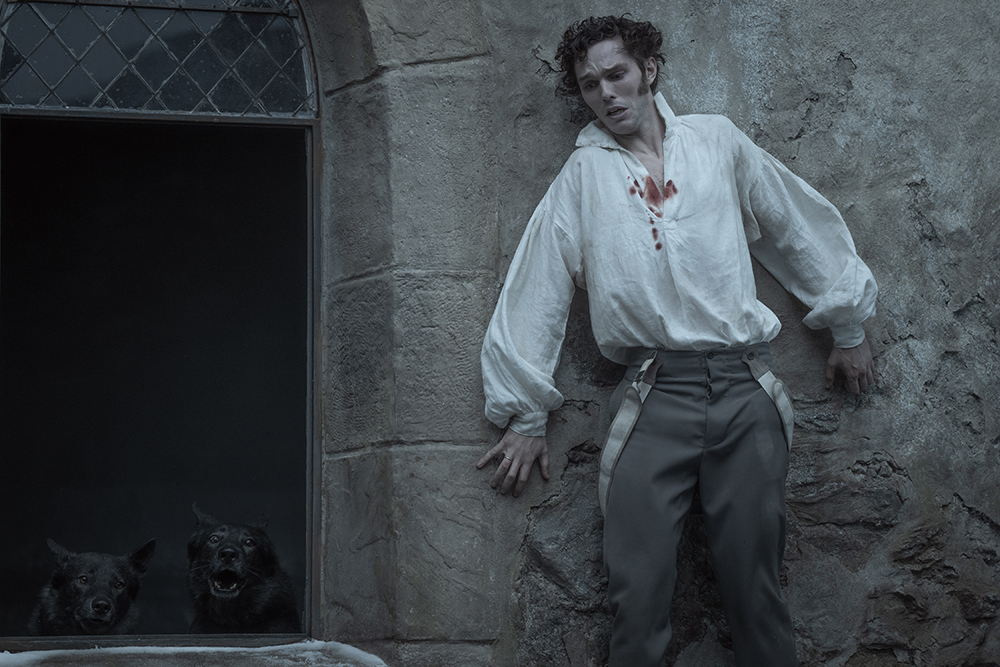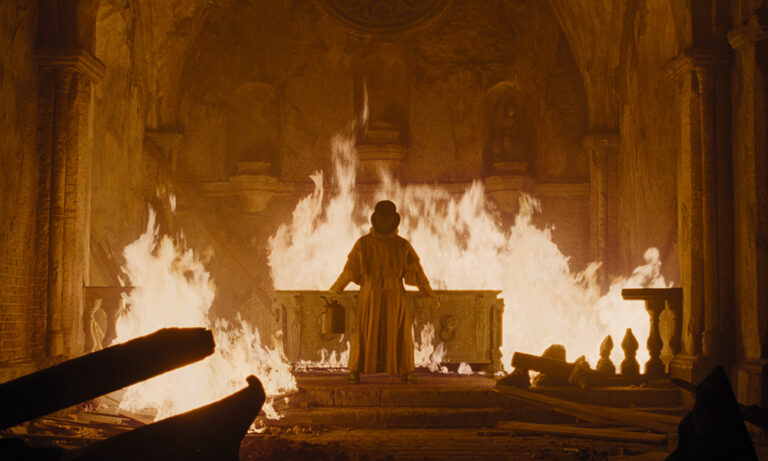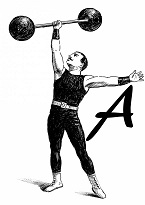Regardless, I advise you put aside whatever you think you know about Dracula/Nosferatu (no, they’re actually not one and the same) and be prepared to have your minds expanded and enlightened by Robert Eggers’ “Nosferatu.” It’s a dark, disturbing, erotic piece of cinematic art that pays homage to the gothic genre and the original—often in ways that makes it almost feel as though it wouldn’t be out of place to its 1922 audience (though I’m sure they’d all get a heck of a surprise when the actors opened their mouths and sound came out). And I’m relieved it made the dozens of times I watched the trailer the past 6 months entirely worth it.
Eggers and His Inspiration
Many know and love Robert Eggers for “The Lighthouse” and “The Witch,” and have been hotly awaiting “Nosferatu” since it was announced in 2016. Drawn to ‘anything dark’ (a man after my own heart), “Nosferatu” was born out of a childhood obsession. Eggers stated in a 2016 interview, “I saw a picture of Max Schreck as Count Orlok in a book in my elementary school and I lost my mind.” And he’s on to something. Despite being over 100 years old, there is even now something undeniably creepy about Schrek’s Nosferatu, with his long, curling fingers and wild, staring eyes.
And it’s remarkable we’re even watching “Nosferatu” now. Directed by F.W. Murnau—from a screenplay written by Henrik Galeen—“Nosferatu” was an unauthorized, low budget re-telling of Dracula made for German audiences in 1922. And although Stoker’s heirs eventually sued, demanding the copies be destroyed, the film still lived on. So what exactly are the similarities and differences between Dracula? One, the original Prince of Darkness, and the other his arch nemesis, Count Orlok? (Hmm, I wonder who would win in an ultimate showdown?).
Well, in fairness to old Henrik Galeen, he did at least try and switch things up a bit. Naturally, as it was written for a German audience, the film’s set in 1830s Germany rather than modern-day London. The main characters are adapted and the cast slightly reduced. Mina and Jonathan Harker are replaced by Thomas and Ellen Hutter, with Ellen taking on the role of both Mina and Lucy (in “Dracula,” it was Lucy, Mina’s friend, who was the vampire’s first victim in Britain). Van Helsing’s character also becomes Dr. Bulwar, who is not a vampire hunter but instead a professor and doctor.
Differing Versions of ‘Dracula’ Spur the Story On

However, the most notable changes “Nosferatu” made relate to the nature of the vampire and vampirism itself. Dracula is a seductive, hypnotic, centuries old undead Transylvanian nobleman who became a vampire through the damnation of God. He passes on the ‘vampiric disease’ by sucking the blood of others and promising the allure of immortal life. Count Orlok, on the other hand, is a plague in himself. He’s a disease-ridden, reanimated corpse whose soul was brought back to life by Belial, one of the Devil’s archdemons. (I don’t know about you, but I know who I’d rather…).
Dracula fears garlic, religious objects, is most vulnerable in his death sleep.’ In “Dracula,” he is thwarted with a stake to the heart and decapitation. Meanwhile Count Orlok is unaffected by bulbs of the rather potent variety, or holy objects. This is the first time we’re introduced to sunlight as a means of destroying a vampire, as opposed to merely weakening it (as in Stoker’s novel). Dracula drinks from the neck, whilst Count Orlok plunges his fangs into the chest. And whereas Dracula is eventually vanquished by Quincey and Harker, it is Ellen’s sacrifice that results in Orlok’s death. Only the blood of a pure-hearted woman at sunrise can defeat him.
So, how exactly does Eggers’ take on and transform this well known gothic horror? Remarkably, he manages to modernise and maintain the film’s authenticity, a feat by no means easily or often achieved. Eggers’ “Nosferatu” is a beautifully rich, fleshed out adaptation. It breathes into it a new lease of life by fully exploring its core themes. The film builds upon its basic foundations, and runs with new concepts without getting carried away and losing the essence of the original story. It is bigger and bolder for sure. However, it doesn’t overreach, and isn’t overly saturated with superfluous dialogue or an excess of extra sequences.
A World that Feels Real
Even its technical elements align with the feeling of the 1922 original. We’ve long moved beyond the silent movie. However, “Nosferatu’s” gothic soundtrack by Robin Carolan is still very much at the forefront. It creates a sense of dread and foreboding that filmmakers and audiences would have once relied on. The use of colour, too, only adds to its authenticity. Paying homage to its black and white original, the film uses colour for scenes that take place in ‘real life’ and black and white for scenes in ‘vampire time,’ as well as employing specific filters and colour palettes to arouse and excite a sense of tension and mood.
And it just feels real. As evidenced by “The Witch” or “The Lighthouse,” Eggers has an uncanny ability to re-create a sense of place and fill it with characters and communities that belong. And with a larger budget in “Nosferatu,” Eggers made sure everything we see is as accurate as it can be. The streets of Wisborg—where the film is set—are bustling and crowded. Meanwhile, birds-eye shots continually remind us how small, compact, and vulnerable they are. And this is only reinforced as we see the shadow of Nosferatu’s hand looming over the town menacingly. All the while, the plague picks off the inhabitants one by one.
Skarsgård and Depp are Fascinating

What I love most about “Nosferatu” is how even 100 years on, there’s still room for new interpretations of the vampire as we think we know it. It’s a testament to Eggers’ commitment to create something authentic and representative of what a dead Transylvanian nobleman would be. As he states in an interview, “The vampire of folklore is a corpse. An undead corpse.” Eggers elaborates on how it went from that, to the charismatic representations of vampires we have come to know instead, resembling something closer to what we would recognise as a zombie. The mustache—which may seem out of character for some—was born from Eggers’ commitment to representing the traditions of the time. Numerous prosthetic pieces used to achieve the right look. Additionally, Bill Skarsgård worked with a voice coach to get his voice to drop an octave lower.
And at the forefront of all of this is an exceptional performance by Lily-Rose Depp as Ellen. Really this is her story. The narrative is framed around her. We see and experience it all primarily through her lens as she serves as the connection between the two worlds. Misunderstood by those around her due to fits of melancholy and her visions into another realm, she’s a victim of her own time, yet she by no means acts like the victim here. Though Count Orlok is obsessed with her, and pursues her, it is she that calls upon him, that seeks him out, and it is she that brings about his demise. In my opinion, this is what makes this film so utterly unique, and what truly brings it into the modern age.



